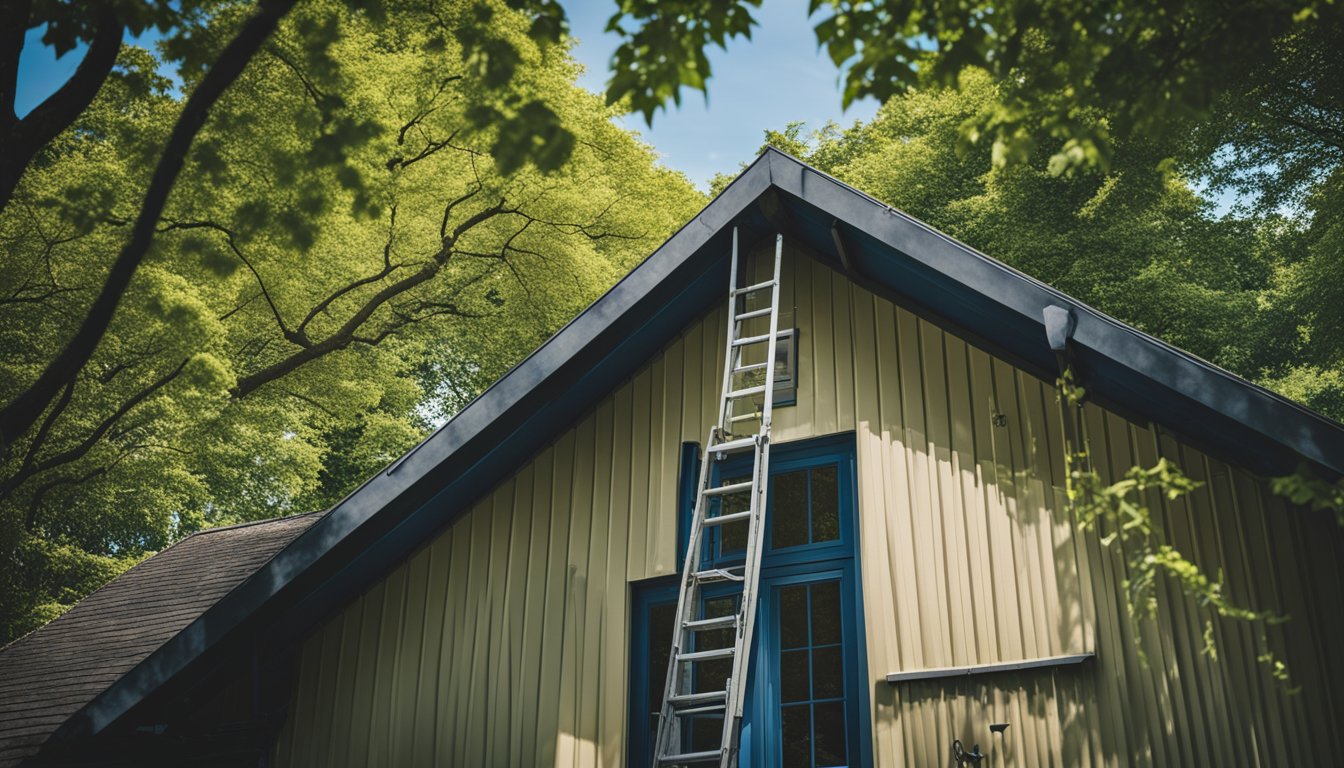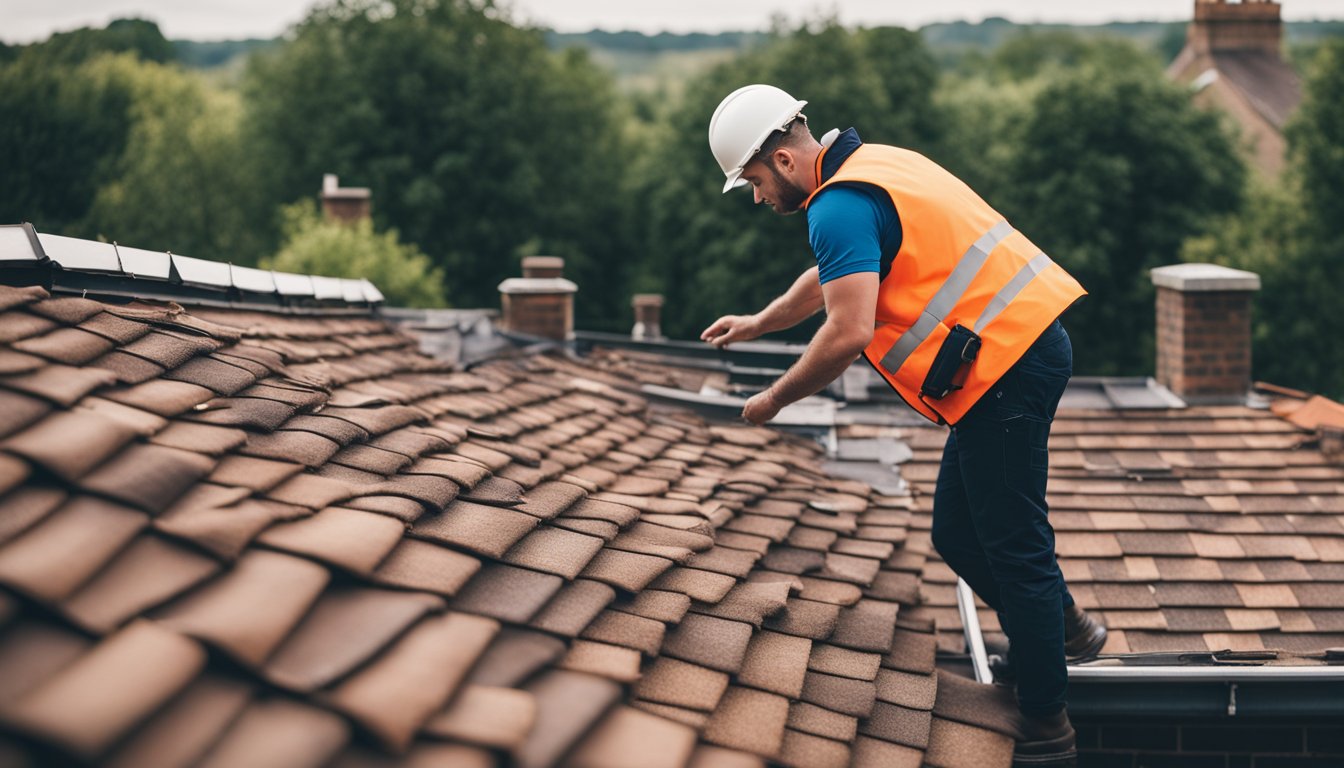Late updated: 29 Nov 2024 14:11
Written by: Oliver Bennett
Creating a Roof Maintenance Plan for Your UK Home: Essential Tips for Longevity
Maintaining the integrity of our homes is crucial, and the roof plays a central role in this responsibility. As UK homeowners, we often face a variety of weather conditions that put our roofs to the test. Creating a dedicated roof maintenance plan is essential for extending the life of our roofs and avoiding costly repairs. Regular inspections and seasonal upkeep can make a significant difference in maintaining the safety and comfort of our homes.

A comprehensive maintenance strategy involves understanding the materials and structure of our roofs. Different roofing materials require distinct approaches to upkeep, making it vital to tailor our maintenance plans accordingly. We should consider regular checks for signs of damage, such as missing tiles or blocked gutters, as these can lead to larger problems if not addressed promptly. Additionally, cleaning and clearing debris can prevent moisture buildup that might compromise the roof's integrity.
To help navigate this process, we'll explore key aspects of roof maintenance and provide actionable steps that we can incorporate into our routines. From assessing current conditions to answering common questions, the insights offered will support us in safeguarding our property's value and ensuring a secure living environment. Let's dive into how we can take charge of our roof's health with a robust plan.
Key Takeaways
- Regular assessments prevent costly repairs.
- Tailoring strategies to roof types is vital.
- Address signs of wear promptly.
Assessing Your Roof's Current Condition

To properly maintain our roofs, it's essential to understand the current state and material composition of the structure. We need to look for common issues like leaks and damage while also considering the types of materials used.
Identifying Potential Issues
Regular inspections help identify signs of roof damage early. We should check for water damage, such as stains or mould on ceilings, which might indicate leaks. Damaged flashing around chimneys or vents can lead to significant problems, as it protects against water ingress.
Rot and mould are indicators of a compromised structure. Damaged shingles or tiles need to be promptly replaced to avoid further deterioration. Flat, metal, and clay tiled roofs each have specific problems to watch for. Flat roofs may experience pooling, whereas metal roofs can corrode, and clay tiles may crack or slip.
Timely detection of these issues prevents more costly repairs. Using a torch or binoculars can be helpful for visual inspections from a safe distance. Keeping a checklist ensures nothing is overlooked and sets a baseline for future evaluations.
Understanding Roofing Materials and Structures
Knowledge of roofing materials enhances our ability to assess and maintain them effectively. Some common materials in the UK include clay tiles, slates, and shingles. Each material has its strengths and vulnerabilities. Clay tiles are durable but can break if walked on heavily. Slates are long-lasting yet can be expensive to replace.
Flat roofs often use bitumen, felt, or fibreglass, each with different lifespans and maintenance needs. Metal roofs, like aluminium or steel, offer durability, require specific treatments to prevent rust.
Understanding the structural integrity of our roofs is imperative. Weight-bearing capacity varies between materials. Regularly review the roof's underlayment and supporting structures to ensure no hidden damage or potential for collapse, which could compromise safety and performance.
Crafting a Comprehensive Maintenance Strategy

In crafting a roof maintenance plan for your UK home, focus on scheduling regular inspections, implementing preventative measures, and ensuring compliance with local regulations. Regular care helps in enhancing the roof's lifespan and avoiding unexpected repairs.
Scheduling Routine Maintenance and Inspections
Routine maintenance is key to maintaining a sturdy roof. Regular inspections, scheduled biannually, help identify wear and damage. Collaborate with a professional roofing contractor for expert assessment. During inspections, check roof ventilation, drainage, and guttering. Investments in roof cleaning and clearing downspouts prevent potential blockages.
Utilise technology such as drones for preliminary checks. Implementing a structured roof maintenance program facilitates adherence to schedules, vital for upkeep. Moreover, coordinate these checks with other seasonal home maintenance tasks to promote efficiency and cost-effectiveness.
Preventative Measures for Long-Term Durability
Preventative steps are crucial for sustaining long-term roof health. Ensuring proper roof ventilation and insulation can prevent issues like ice dams during winter. Regularly assess waterproofing, particularly in regions with high rainfall, to avert leaks and interior damage.
Clear debris from gutters and drains to guarantee efficient drainage. Implement a routine roof cleaning practice, tailored to your roof type, to keep surfaces free from moss and lichen. Engage in routine inspections for potential weak spots and address them promptly.
Repairing and Upgrading Roof Components
Timely repairs and upgrades prolong the life of roof components. When damages arise, quick intervention is essential. Engage qualified professionals for roof repairs to ensure quality workmanship, focusing on areas like tiles, shingles, and flashing.
Evaluate the need for modern materials that might provide better durability. Upgrading insulation and ventilation systems can enhance efficiency. Also, consider integrating energy-efficient options during updates for additional benefits. Keep a record of repairs and improvements as part of your comprehensive maintenance strategy.
Complying with Local Building Standards
Compliance with local building standards and regulations is imperative. Before undertaking significant repairs, check if planning permission is needed, particularly for listed buildings or conservation areas. This prevents potential legal issues and ensures your maintenance plan aligns with local guidelines.
Work with knowledgeable contractors who understand regional requirements and can assist in navigating the compliance process. Keeping updated on any changes to regulations ensures continuous conformance and long-term legal assurance for your property. This proactive approach upholds the integrity of your maintenance strategy.
Frequently Asked Questions
Establishing a thorough roof maintenance plan is critical for preserving the integrity of your home. By understanding inspection frequency and associated costs, engaging reliable contractors, and evaluating market value influences, you ensure effective care and decision-making.
What considerations should be taken into account when establishing a roof maintenance plan?
When establishing a roof maintenance plan, we must consider the material of the roof, the typical weather conditions in the UK, and the age of the roof. It's also essential to include regular inspections and address minor repairs promptly to prevent more significant issues.
How frequently should roof inspections be conducted to ensure long-term durability?
Roof inspections should be conducted biannually, ideally in spring and autumn. This timing helps to identify any damage or wear from seasonal changes. Regular inspections assist in catching issues early, which is vital for ensuring the roof's longevity and performance.
What are the typical costs associated with maintaining a roof in the United Kingdom?
The costs associated with maintaining a roof vary widely depending on the type of roof materials, the extent of necessary repairs, and the roof's size. Typically, maintenance costs can range from a few hundred to several thousand pounds annually, depending on the specific needs and location of the property.
What essential questions should one ask a roofing contractor prior to engagement?
Before engaging a roofing contractor, we should ask about their experience, the scope of services provided, and details of their warranty. It's also important to ask for references and a detailed estimate, clarifying all potential additional costs to avoid surprises later.
To what extent does the installation of a new roof enhance the market value of a home?
Installing a new roof can significantly enhance the market value of a home by improving its curb appeal and ensuring structural integrity. A new roof can be a strong selling point, often increasing buyer interest and potentially leading to a higher sale price.
Is it feasible to reside in one's home whilst the roof is undergoing replacement works?
It is feasible to reside in one's home during a roof replacement, though it may be disruptive due to noise and the presence of contractors. Communication with the contractor about the process can help us plan around the most intrusive periods of work for minimal inconvenience.
